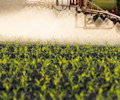Earlier this year, the FAIRR Initiative released a statement calling on all G20 nations to set effective targets for greenhouse gas (GHG) reductions in agriculture within or alongside their National Determined Contributions (NDCs) at COP26. The ‘Where’s the Beef’ statement has now been supported by investors with more than $6 trillion in collective assets, as well as by Ban Ki-moon, former UN Secretary-General and one of the main architects of the Paris Climate Agreement.
As an investor network, we work closely with our members to understand material ESG issues for them and stay ahead of the curve about risks in the food system. From recent conversations, it is clear investors are concerned about the lack of a clear policy roadmap for the agricultural sector to align itself to the global 1.5°C climate target. There’s also a lack of transparency about how the sector can align itself with governmental goals on biodiversity and forest preservation.
The IEA’s Net Zero by 2050 report lays out a clear roadmap for the energy sector to the global net zero goal, and many government NDCs outline the role energy will play in their efforts to decarbonise. There is now a need for an equivalent roadmap and commitment for the agriculture and land-use sector.
What Does the IEA Energy Report Say About Agriculture?
The IEA energy report, which was brought out earlier this year, lays out steps required for the global energy sector transition to net zero emissions, such as an end to sales of new internal combustion engine passenger cars by 2035, and phasing out all unabated coal and oil power plants by 2040.
Roadmaps are important both for policymakers and for investors to guide strategies towards meeting the Paris climate target of striving for 1.5°C. After all, we can’t aim without a target and a roadmap for how to get there. Targets also help the financial sector evaluate the risks of stranded assets, and divert capital to prioritise investments in opportunity sectors, such as green energy or sustainable protein.
The IEA notes that ’the largest source of GHG emissions other than the energy sector is agriculture, forestry and other land use (AFOLU)’, producing between 10‐12 Gt CO2‐equivalent net GHG emissions per year (with roughly half of this from carbon dioxide and a half from nitrous oxide and methane). Food systems as a whole contribute up to 15 Gt CO2-eq GHG per year.
The IEA estimates that reducing meat consumption in households with the highest levels of per capita consumption today to the global average consumption level would reduce GHG emissions by more than 1 Gt CO2-eq in 2050, which would free up 280 million hectares of land – which is roughly the size of France, Germany and Indonesia combined.
Interestingly, a recent paper by Hayek et al estimated an upper bound for emissions reduction and removals potential combined of 332-547 GtCO2eq between 2015-2050 (9.5-15.6 Gt CO2 per year). A more agri-specific roadmap at a global level would provide more clarity on exactly how, and by how much, we need to reduce animal protein consumption to meet our climate goals.
Addressing Methane
A roadmap for the sector will be particularly important to avoid tipping points in the climate system. The IEA report did not feature methane emissions predominantly as it focuses on the energy sector. However, the United Nations recently noted that cutting methane emissions is the quickest way to slow global heating in the near term, since methane is 84 times more powerful in trapping heat than carbon dioxide over a 20-year period, and has caused about 30% of global warming to date.
What About Biodiversity Goals?
It’s also vital that investors and companies alike have access to a roadmap to 1.5C for the land use and agricultural sector which aligns with biodiversity goals, as well as other planetary boundaries such as freshwater use, and with food security goals. At the moment, the widely-used paper by Roe et al (2019) reviews a wide range of pathways, and some pathways show large amounts of natural forest being converted to bioenergy by 2050 which would not align with biodiversity goals. It would be important to introduce biodiversity safeguards to 1.5C pathways. This is vital because over half of the world’s GDP is moderately or highly dependent on nature.
The World Resources Institute has pointed out that the IEA’s net-zero scenario relies on the use of 100 exajoules (EJ) of bioenergy in 2050 and that while this is a lower estimate than previous assumptions, it may be unrealistic and could compete with land use for food (or alternatively for biodiversity and nature). WRI argues that reforesting this land rather than using it for bioenergy would typically benefit the climate more, as well as biodiversity. The need for bioenergy with CCS (also known as BECCS) may be lower where model assumptions take into account a larger potential shift in diets.
The Road to COP26
The phrase ‘roadmap’ has become somewhat of a buzzword within conversations around sustainability. But roadmaps are more than just a buzzword, and examples such as the IEA’s Net Zero by 2050 show these are extremely useful, both to investors and to policymakers. That’s because they set specific targets and milestones that make it easier to assess what a robust pathway towards the 1.5°C goals might look like.
Whilst the IEA report is a useful pathway for the energy sector, there is an urgent need for a clear pathway and targets for the agricultural sector. If this roadmap was produced by a leading multilateral organisation, such as the UN FAO, it could be regularly updated in line with recent science. Such a pathway must be clear how actions translate to reductions and also be easily translatable for financial institutions, businesses and governments alike. We have seen various recent commitments made at the UN Food System Summit, and in the run-up to COP26 (e.g., cutting methane emissions), but without a global roadmap it is hard to assess if commitments are in line with global goals.
Agriculture should be front and centre at COP26, which begins next week in the UK. If we are to achieve the goals of the Paris Climate Agreement, we need greater clarity on the milestones the agriculture and land-use sector must hit to reach 1.5C. Without them, the sector risks undermining global progress towards that objective.
FAIRR insights are written by FAIRR team members and occasionally co-authored with guest contributors. The authors write in their individual capacity and do not necessarily represent the FAIRR view.











